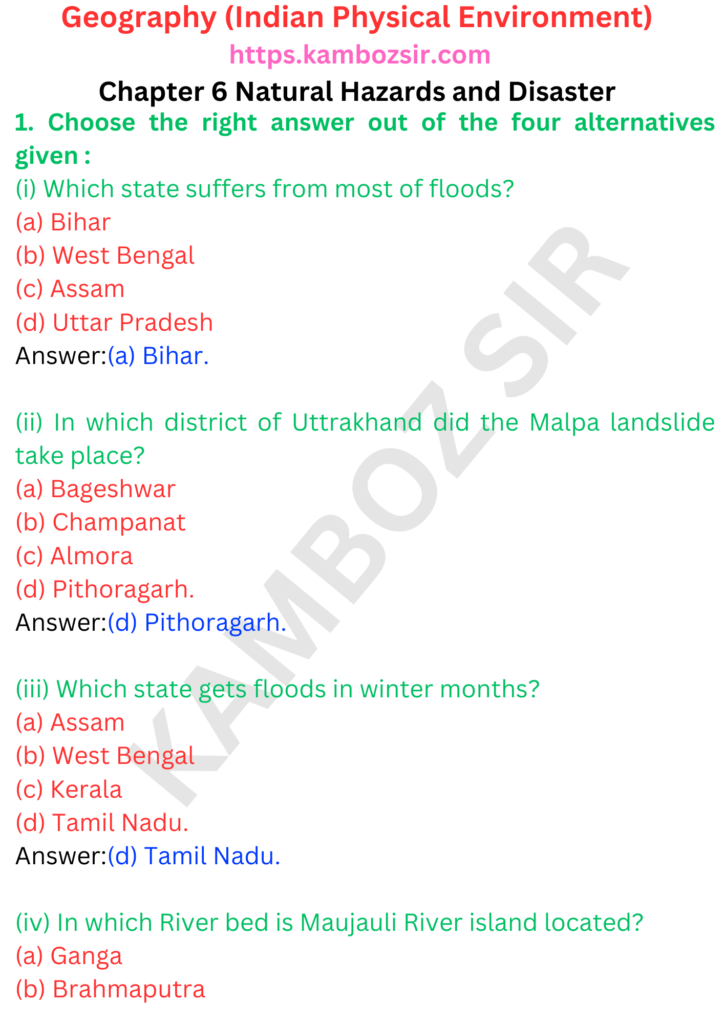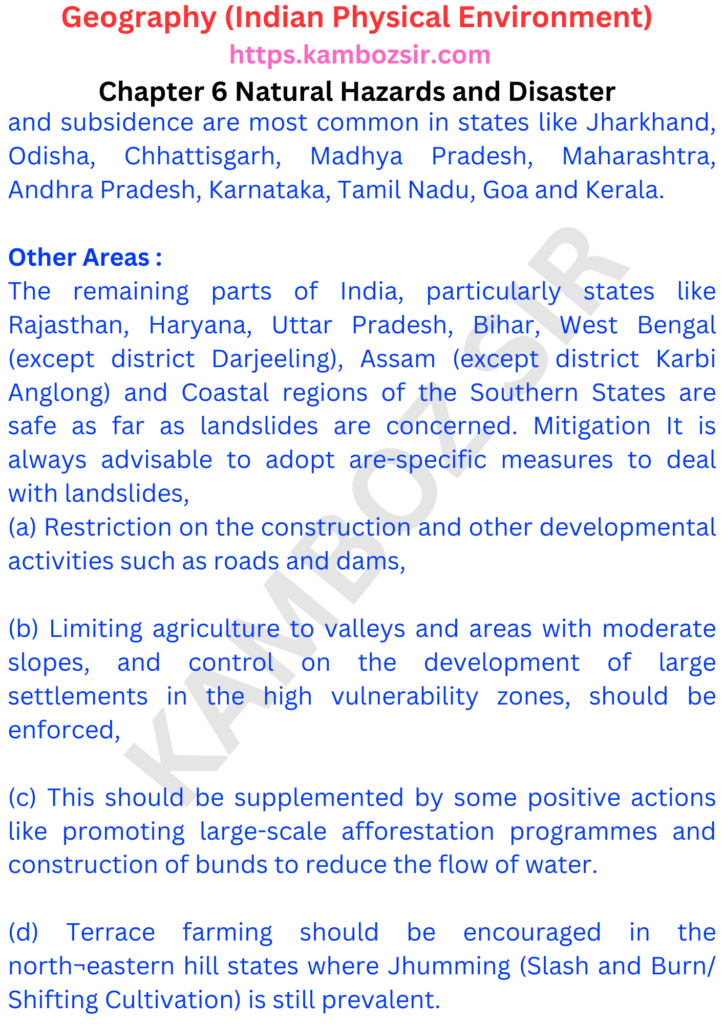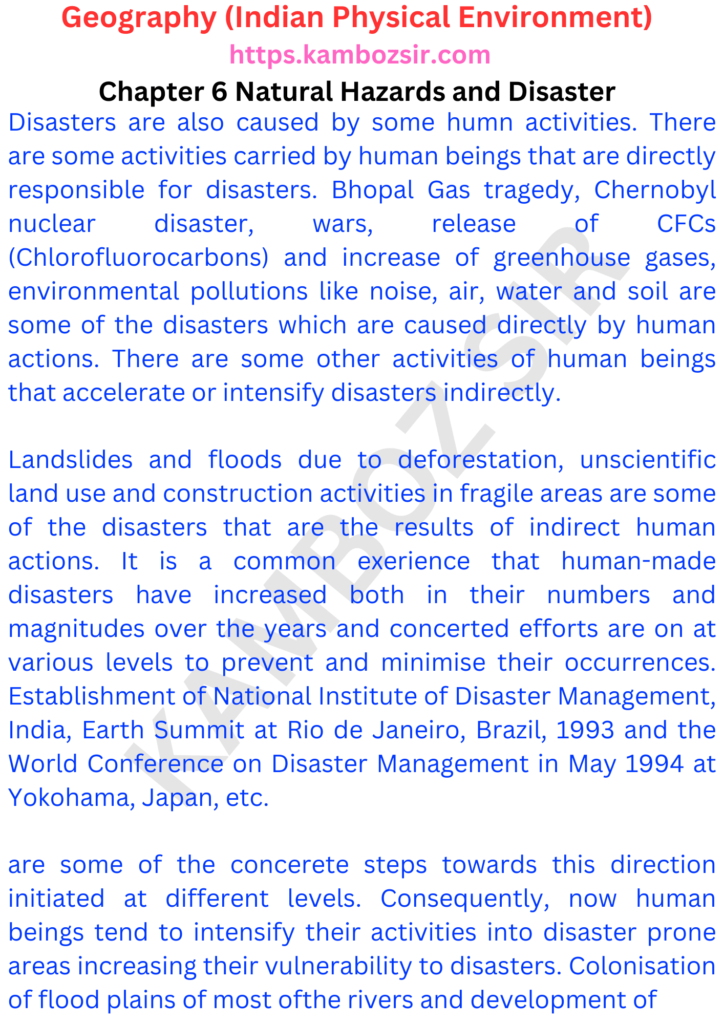Class 11 Geography Chapter 6 Natural Hazards and Disaster Solution
Class 11 Geography Chapter 6 Natural Hazards and Disaster Solution
In Chapter 6 of Class 11 Geography, we explore the crucial topic of natural hazards and disasters. Natural hazards refer to the events or phenomena in the environment that have the potential to cause harm to humans, property, and the environment. Disasters, on the other hand, occur when these hazards result in significant damage, loss of life, and disruption of normal life.
We begin by understanding the concept of natural hazards and the factors that contribute to their occurrence. These factors include geological processes, weather and climate patterns, and human activities that can exacerbate the impact of hazards. We study various types of hazards such as earthquakes, volcanic eruptions, cyclones, floods, droughts, landslides, and tsunamis.
Next, we delve into the causes and characteristics of each type of natural hazard. We examine the processes and factors that lead to the occurrence of earthquakes and volcanic eruptions. We also explore the formation and characteristics of cyclones, floods, droughts, landslides, and tsunamis. Understanding these aspects helps us comprehend the nature and impact of different hazards.









